Quick Summary
Finding a snake in your toilet is rare, but it does happen. It’s more common in rural areas or places with older plumbing. Snakes usually enter through gaps in pipes or sewer lines. Keep your plumbing in good shape, seal any openings, and consider a toilet lid lock if you’re concerned. If you do find a snake, don’t panic! Call animal control or a professional wildlife removal service.
Ever flushed the toilet and wondered what *else* might be down there? The thought of a snake slithering up into your bathroom is unsettling, to say the least. While it’s not an everyday event, it’s also not just an urban legend. We’ll walk you through how likely this is, why it happens, and what you can do to keep your toilet snake-free. Don’t worry; you’re not alone in wondering about this creepy possibility!
Ready to learn how to protect your porcelain throne? Let’s get started!
How Likely Is It to Find a Snake in Your Toilet?
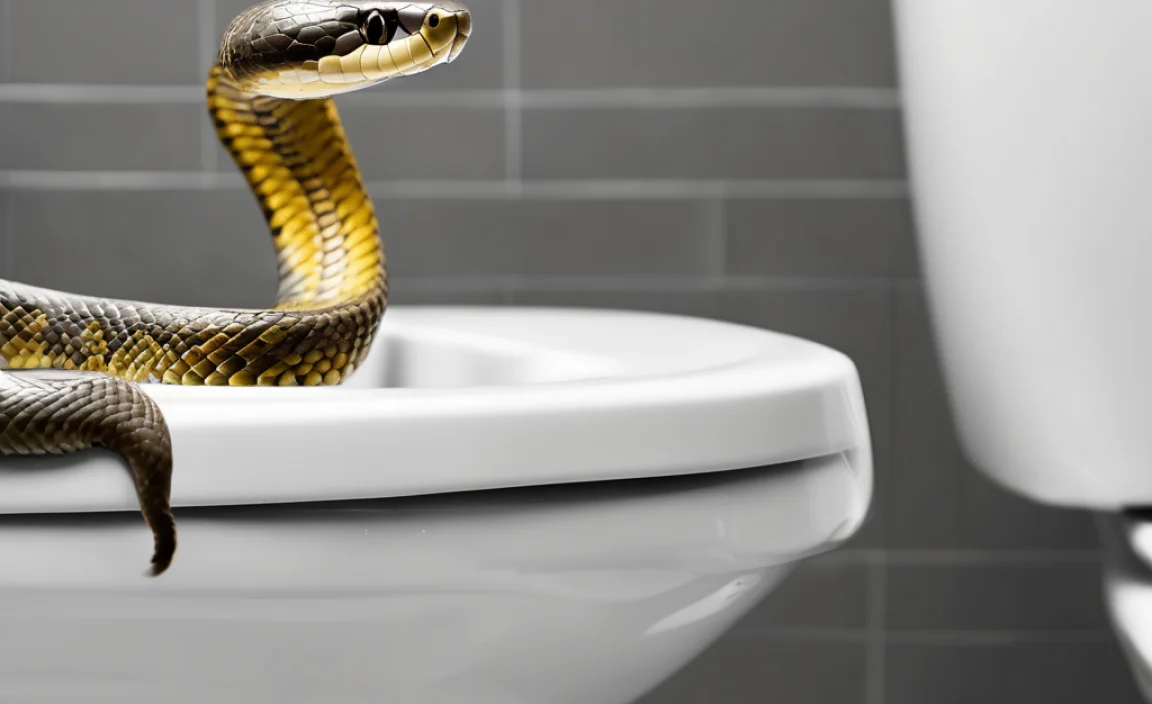
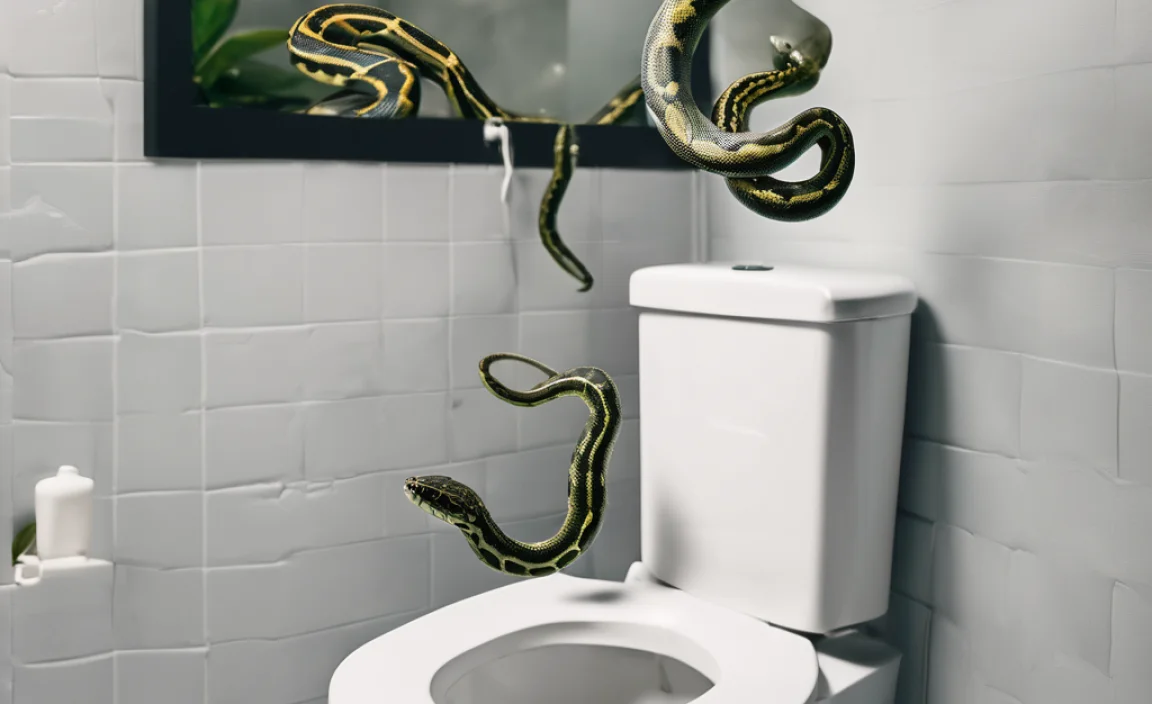
Okay, let’s get real. The chances of discovering a snake in your toilet are pretty low. Think of it like winning the lottery – possible, but not probable. Several factors influence how likely this is:
- Location: If you live in a rural area near wooded or swampy habitats, your chances are higher than if you’re in a bustling city.
- Plumbing: Older homes with cracked or poorly sealed pipes are more vulnerable.
- Climate: Snakes are more active in warmer months, increasing the likelihood of encounters.
While it’s not a common occurrence, understanding the conditions that make it *more* likely can help you take preventive measures.
Why Would a Snake End Up in Your Toilet?
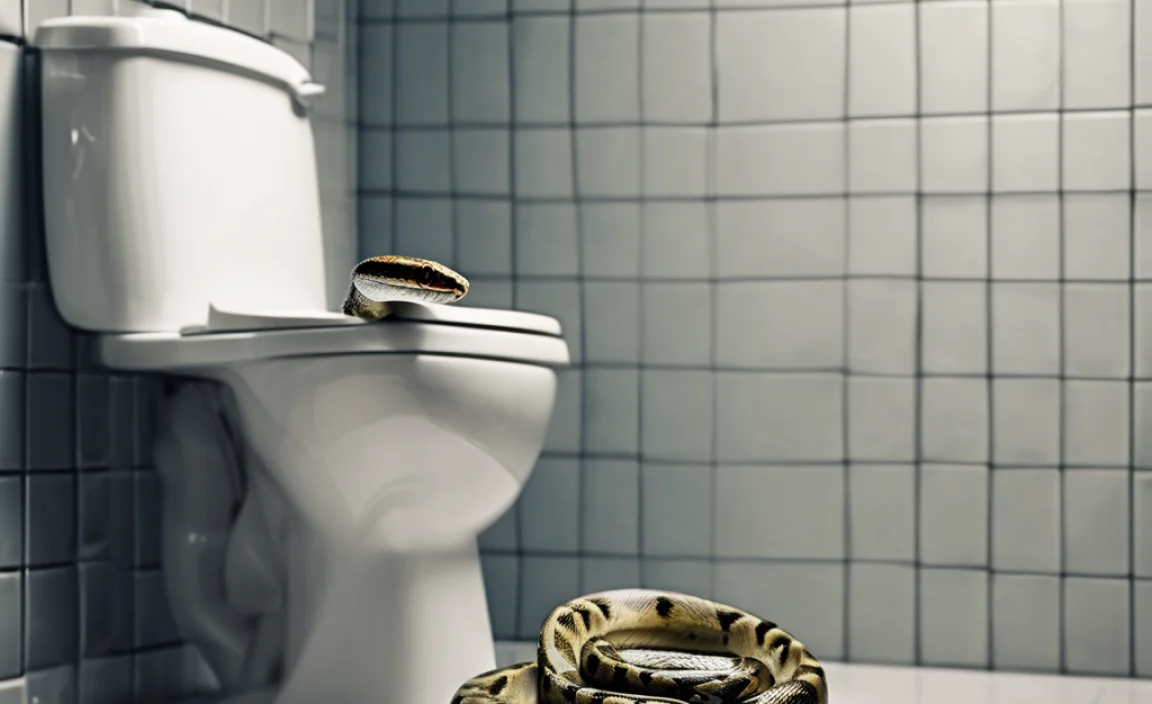
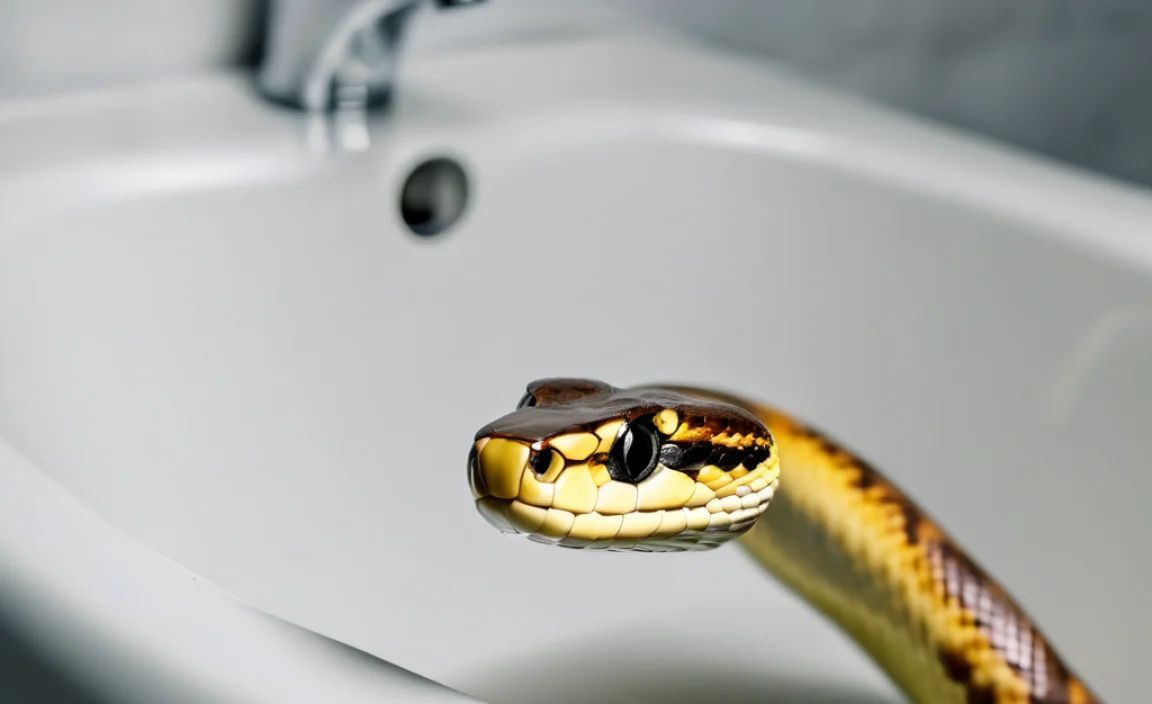
Snakes aren’t exactly lining up to take a swim in your toilet bowl. So, how do they even get there? Here’s a breakdown of the most common entry points and reasons:
Entry Points
- Sewer Pipes: This is the most common route. Snakes can navigate sewer systems, especially if there are cracks or openings in the pipes.
- Vent Pipes: These pipes extend from your plumbing system to the roof, allowing gases to escape. Snakes can sometimes climb these pipes and end up in your toilet.
- Gaps Around the Toilet: Small openings around the base of your toilet can be an entry point, although less common.
Reasons for Entry
- Searching for Water: Snakes need water to survive. During dry periods, they might venture into plumbing systems in search of a drink.
- Hunting for Food: Rodents and other small animals sometimes live in sewers. Snakes might follow their prey into the plumbing.
- Seeking Shelter: Cool, dark pipes can provide a temporary refuge from extreme temperatures.
Which Types of Snakes Are Most Likely to Appear?

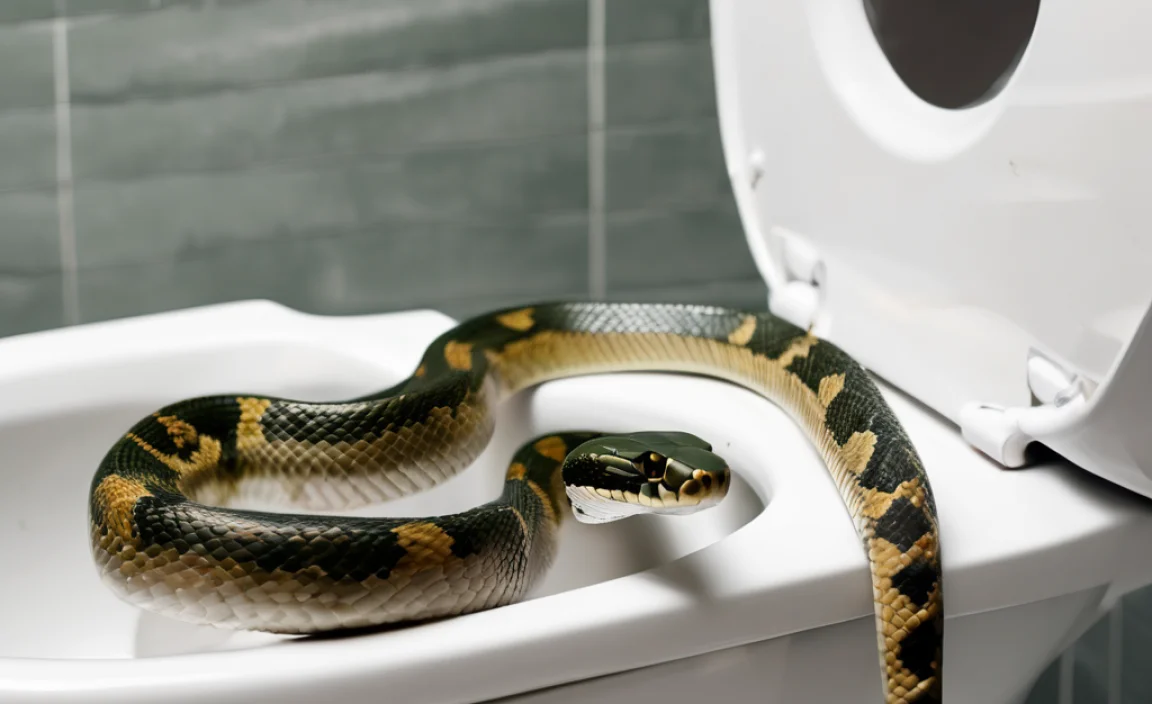
Not all snakes are equally inclined to explore your plumbing. Here are some of the most common culprits, depending on your region:
- Garter Snakes: These are common in North America and are relatively small and non-venomous.
- Rat Snakes: Also found in North America, these snakes are excellent climbers and can easily navigate pipes.
- Water Snakes: As the name suggests, these snakes are often found near water and might venture into plumbing systems.
- Pythons and Boas: In areas where these snakes are kept as pets (and sometimes escape), they *could* theoretically end up in a toilet, though this is rare.
It’s worth noting that venomous snakes in toilets are exceedingly rare. Most snakes found in toilets are non-venomous and pose little threat.
Step-by-Step Guide: Preventing Snakes from Entering Your Toilet
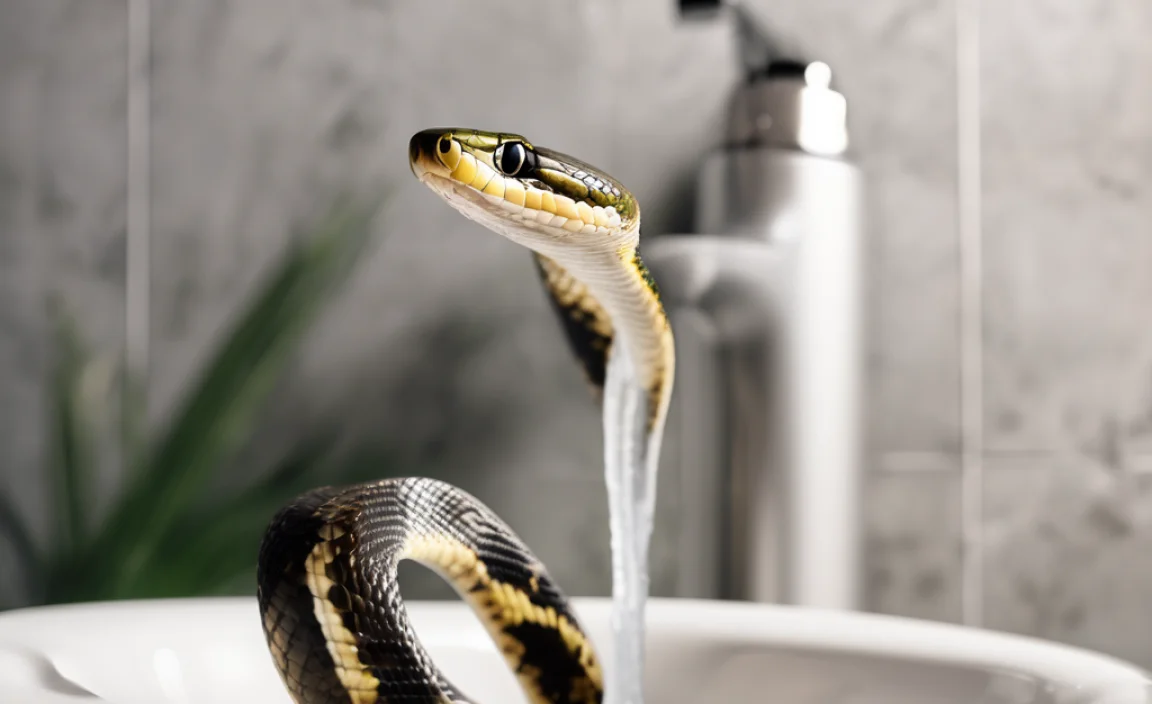
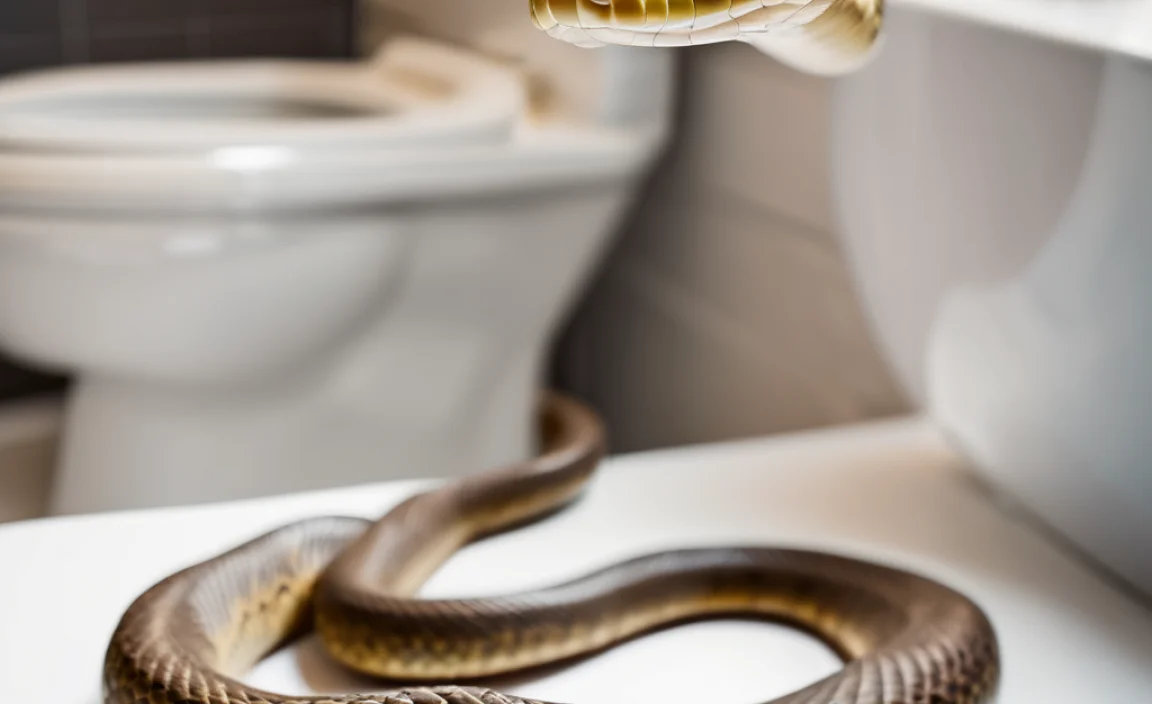
Prevention is always better than cure. Here’s a step-by-step guide to keep those slithery intruders out of your bathroom:
Step 1: Inspect Your Plumbing
Regularly check your plumbing for any signs of damage or wear. Pay close attention to:
- Cracks in Pipes: Look for cracks or holes in exposed pipes, especially in the basement or crawl space.
- Loose Connections: Ensure all pipe connections are tight and secure.
- Gaps Around Pipes: Seal any gaps around pipes where they enter your home.
Tool Needed: Flashlight
Step 2: Seal Potential Entry Points
Once you’ve identified any vulnerabilities, seal them up:
- Use Caulk: Apply caulk to seal small cracks and gaps around pipes and the base of your toilet.
- Install Screens: Cover vent pipes with screens to prevent snakes (and other critters) from climbing in.
- Repair Damaged Pipes: Replace any damaged or deteriorated pipes promptly.
Tools Needed: Caulk gun, caulk, wire mesh screen, pipe wrench (if replacing pipes)
Step 3: Maintain Your Yard
A well-maintained yard is less attractive to snakes. Here’s what to do:
- Mow Regularly: Keep your grass short to reduce hiding places for snakes and their prey.
- Remove Debris: Clear away piles of leaves, wood, and rocks that could provide shelter.
- Control Rodents: Eliminate potential food sources by controlling rodent populations around your home.
Tools Needed: Lawn mower, rake, rodent traps (if necessary)
Step 4: Consider a Toilet Lid Lock
If you’re particularly concerned, you can install a toilet lid lock. This prevents snakes from easily entering the toilet bowl.
- Purchase a Lock: Buy a toilet lid lock from a hardware store or online retailer.
- Install the Lock: Follow the manufacturer’s instructions to install the lock securely.
Tool Needed: Screwdriver (usually included with the lock)
Step 5: Flush Regularly
Regularly flushing toilets, especially in guest bathrooms or those that aren’t used often, can help prevent snakes from being attracted to stagnant water.
What to Do If You Find a Snake in Your Toilet
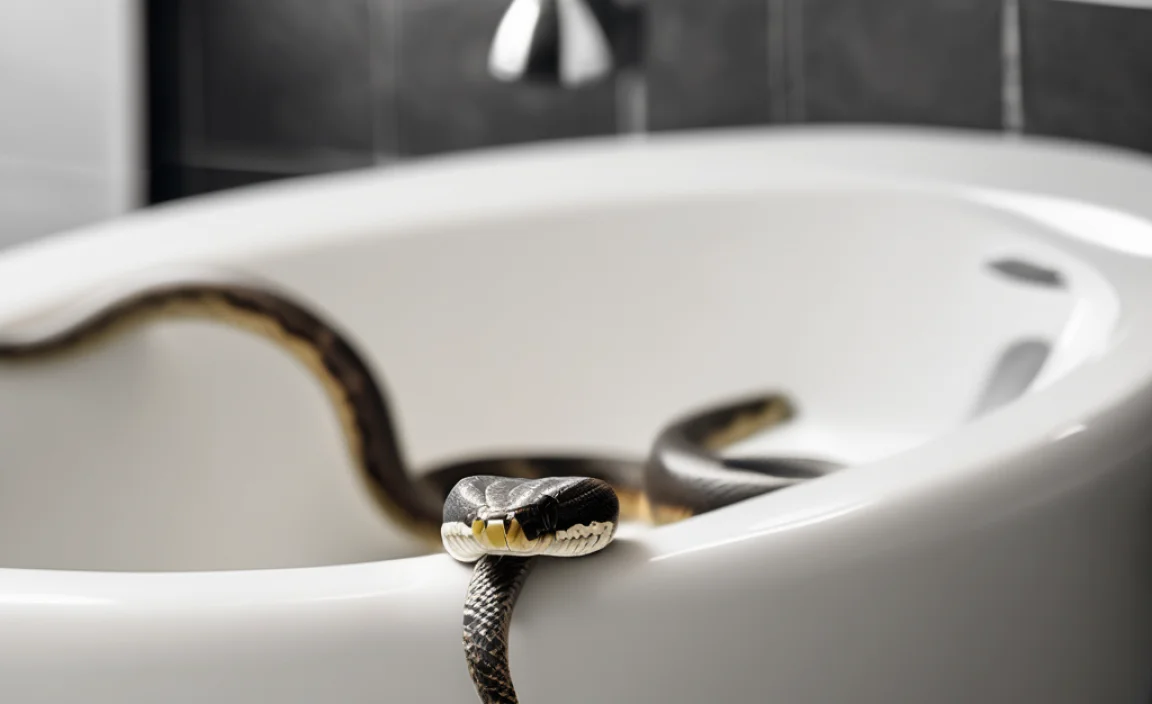
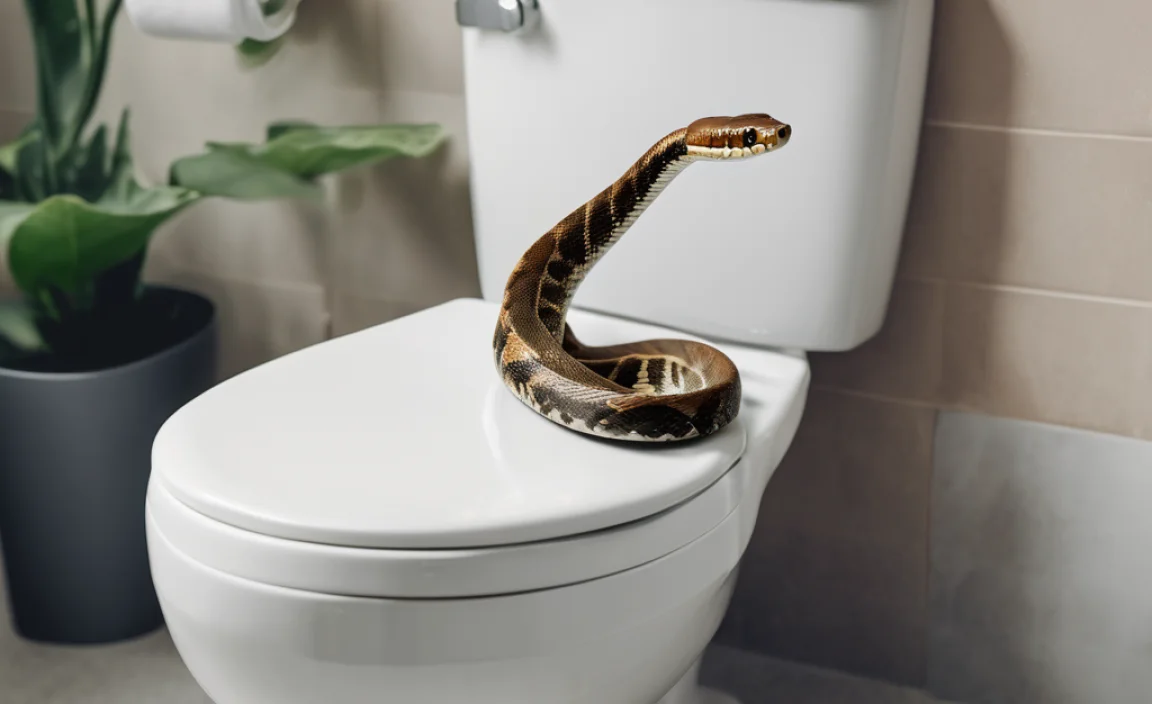
Okay, despite your best efforts, you’ve found a snake in your toilet. Don’t panic! Here’s what to do:
Step 1: Stay Calm
The most important thing is to remain calm. Snakes are more likely to bite if they feel threatened. Back away slowly and assess the situation.
Step 2: Identify the Snake (If Possible)
If you can safely identify the snake from a distance, do so. This will help animal control or wildlife professionals determine the best course of action.
Safety Tip: Do not approach the snake to get a closer look. Use binoculars or a zoom lens on your camera if necessary.
Step 3: Contain the Snake
If possible, close the bathroom door to prevent the snake from escaping into other parts of your house. Place a towel or blanket under the door to seal any gaps.
Step 4: Call for Help
Contact your local animal control, a wildlife removal service, or even the police (in some areas). They have the expertise and equipment to safely remove the snake.
- Animal Control: They can identify and remove the snake.
- Wildlife Removal Service: Professionals who specialize in safely removing wildlife from homes.
Step 5: Do Not Attempt to Remove the Snake Yourself
Unless you are a trained professional, do not try to catch or kill the snake. This can be dangerous and could result in a bite.
DIY vs. Professional Help
Some prevention steps are easy to tackle yourself, while others might require professional help. Here’s a breakdown:
| Task | DIY | Professional Help |
|---|---|---|
| Inspecting Plumbing | Yes | Optional (for thorough inspections) |
| Sealing Small Cracks | Yes | No |
| Installing Screens | Yes | No |
| Repairing Damaged Pipes | Maybe (if experienced) | Yes (recommended) |
| Removing a Snake | No | Yes |
If you’re comfortable with basic plumbing and home maintenance, you can handle many prevention tasks yourself. However, when it comes to repairing significant plumbing damage or removing a snake, it’s best to call in the pros.
Cost Considerations
Preventing snakes from entering your toilet doesn’t have to break the bank. Here’s a rough estimate of potential costs:
| Item | Estimated Cost |
|---|---|
| Caulk | $5 – $10 |
| Wire Mesh Screen | $10 – $20 |
| Toilet Lid Lock | $15 – $30 |
| Plumbing Repairs | $100 – $500+ (depending on the extent of the damage) |
| Wildlife Removal Service | $100 – $300+ (depending on the type of animal and location) |
As you can see, most prevention measures are relatively inexpensive. The biggest cost is likely to be plumbing repairs, which are essential for maintaining the overall integrity of your home anyway.
Tools and Materials You’ll Need
Here’s a handy checklist of the tools and materials you might need for snake prevention:
- Flashlight
- Caulk gun
- Caulk
- Wire mesh screen
- Scissors or wire cutters
- Screwdriver
- Pipe wrench (if replacing pipes)
- Gloves
- Safety glasses
Gathering these items before you start will make the process smoother and more efficient.
Common Mistakes to Avoid
Even with the best intentions, it’s easy to make mistakes. Here are some common pitfalls to avoid:
- Ignoring Small Cracks: Even tiny cracks can be entry points for snakes.
- Using the Wrong Type of Caulk: Make sure to use a caulk that is suitable for plumbing applications.
- Neglecting Yard Maintenance: A messy yard provides the perfect habitat for snakes.
- Trying to Handle a Snake Yourself: This is dangerous and should be left to professionals.
Safety Tips
Safety should always be your top priority. Keep these tips in mind:
- Wear Gloves: Protect your hands from dirt, bacteria, and potential bites (however unlikely).
- Wear Safety Glasses: Protect your eyes from debris and splashes.
- Work in a Well-Ventilated Area: When using caulk or other chemicals, make sure the area is well-ventilated.
- Wash Your Hands: After completing any plumbing or yard work, wash your hands thoroughly with soap and water.
FAQ: Snakes in Toilets
Q1: Can snakes swim up toilets?
Yes, snakes can swim and sometimes enter toilets through sewer pipes. They are more likely to do this if they are searching for water or food.
Q2: Are snakes in toilets dangerous?
Most snakes found in toilets are non-venomous and pose little threat. However, it’s always best to avoid direct contact and call a professional for removal.
Q3: How do I know if I have a snake in my plumbing?
Signs include unexplained hissing sounds from your toilet, unusual odors, or seeing the snake itself. If you suspect a snake, do not use the toilet and call for help.
Q4: What attracts snakes to my toilet?
Snakes are attracted to water sources, rodents, and cool, dark places. Cracks in pipes and poor yard maintenance can also make your property more appealing to snakes.
Q5: Can a snake come up through the shower drain?
Yes, it’s possible, though less common than through the toilet. Shower drains are smaller, but if a snake can fit, it might enter through there.
Q6: Will pouring bleach down the toilet keep snakes away?
While bleach might temporarily deter snakes, it’s not a reliable solution and can damage your plumbing and harm the environment. It’s better to focus on sealing entry points and maintaining your yard.
Q7: How often should I inspect my plumbing for snake prevention?
Ideally, inspect your plumbing at least twice a year, especially before and after the warmer months when snakes are more active.
Conclusion
Finding a snake in your toilet is definitely not a pleasant experience, but it’s also not something you should panic about. By understanding how and why snakes end up in toilets, you can take proactive steps to prevent it from happening. Regular plumbing maintenance, sealing potential entry points, and maintaining your yard are key. If you do encounter a snake, remember to stay calm and call for professional help. With a little bit of effort, you can keep your toilet snake-free and enjoy peace of mind!
